“Now I can begin to live as a human being.”
That is apparently what Emperor Nero had to say when his Golden Palace, Domus Aurea, was finally built. Poor Nero, he must have been living in squalor before he could move into his 300 room abode set on 200 hectares of manicured gardens, fountains, a huge man-made lake as big as the Colosseum (actually the Colosseum sits on top of where the lake was today) and every mod-con you could ask for in 65AD. Walls covered in gemstones, ivory and pure gold, incredible water features, intricate artworks, even a spinning dome that showered perfumed rose petals from above. This was even more extravagant than any Emperor had seen. This was a palace more over-the-top than anything you could imagine. This was opulence taken to an extreme level, and it’s been hiding under Rome since 68AD.
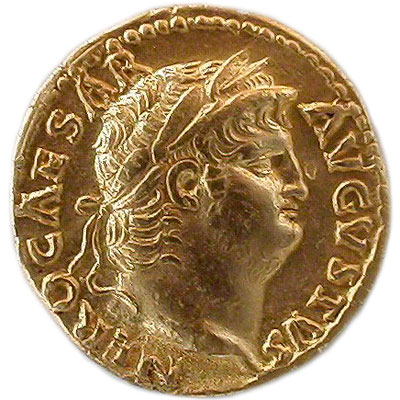
You could tell he liked to indulge, that thick wobbly neck and chubby cheeks says it all.
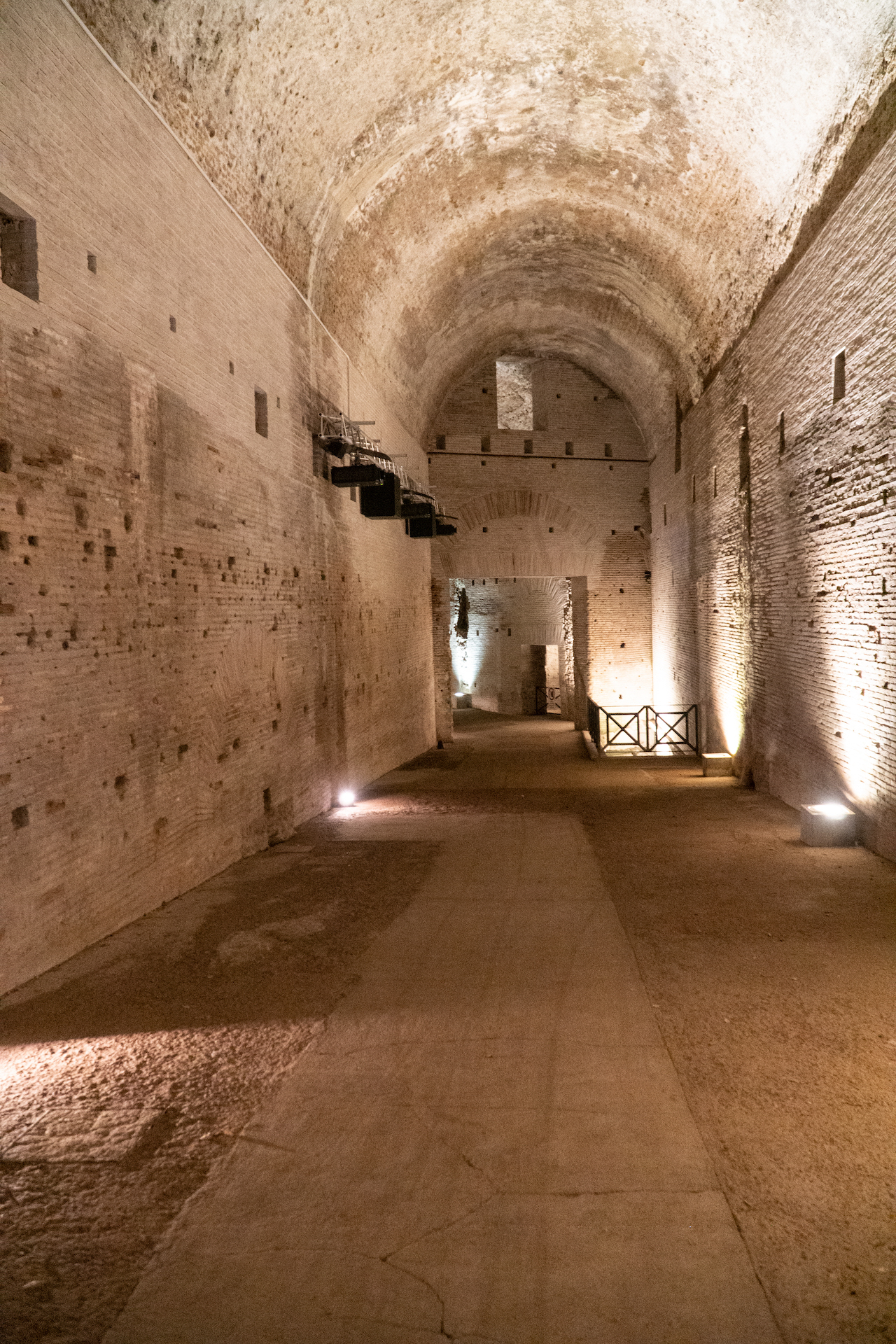
The entrance to the Domus Aurea, these walls are actually part of the baths of Trajan.
The Domus Aurea is an excavation site, as archaeologists are still working to find all of its secrets, however it is open to the public on Saturdays and Sundays only. Tickets are available through the Coop Culture site (the official and least expensive site for most of Rome’s places of interest). Numbers are limited, so tickets need to be reserved ahead of time. I reserved my tickets a few months in advance to be sure. For such a huge place, the site is not easy to find. As it was only re-opened to the public last year there’s no signage till you are actually almost at the site, and because it’s all underground you can’t see any structure from above to guide you. Past the Colosseum’s back entrance lies the Oppian Hill (Colle Oppio), one of the seven hills of Rome. The entrance to the Domus Aurea is up that hill, to the left (there are signs when you get this far), off Via Lubicana.
Donned with a yellow plastic hard hat, non-compulsory as this is an excavation site, we are guided down many steps underground and through the palace (well, only a component of its entirety as only a small amount has been excavated, but that in itself is mind-blowingly huge). The tour guide is an archaeologist and so passionate about the history and full of information it’s hard not to ooh and aah at every turn while you crane your neck looking up at the vastness of it all. It is simply breathtaking.
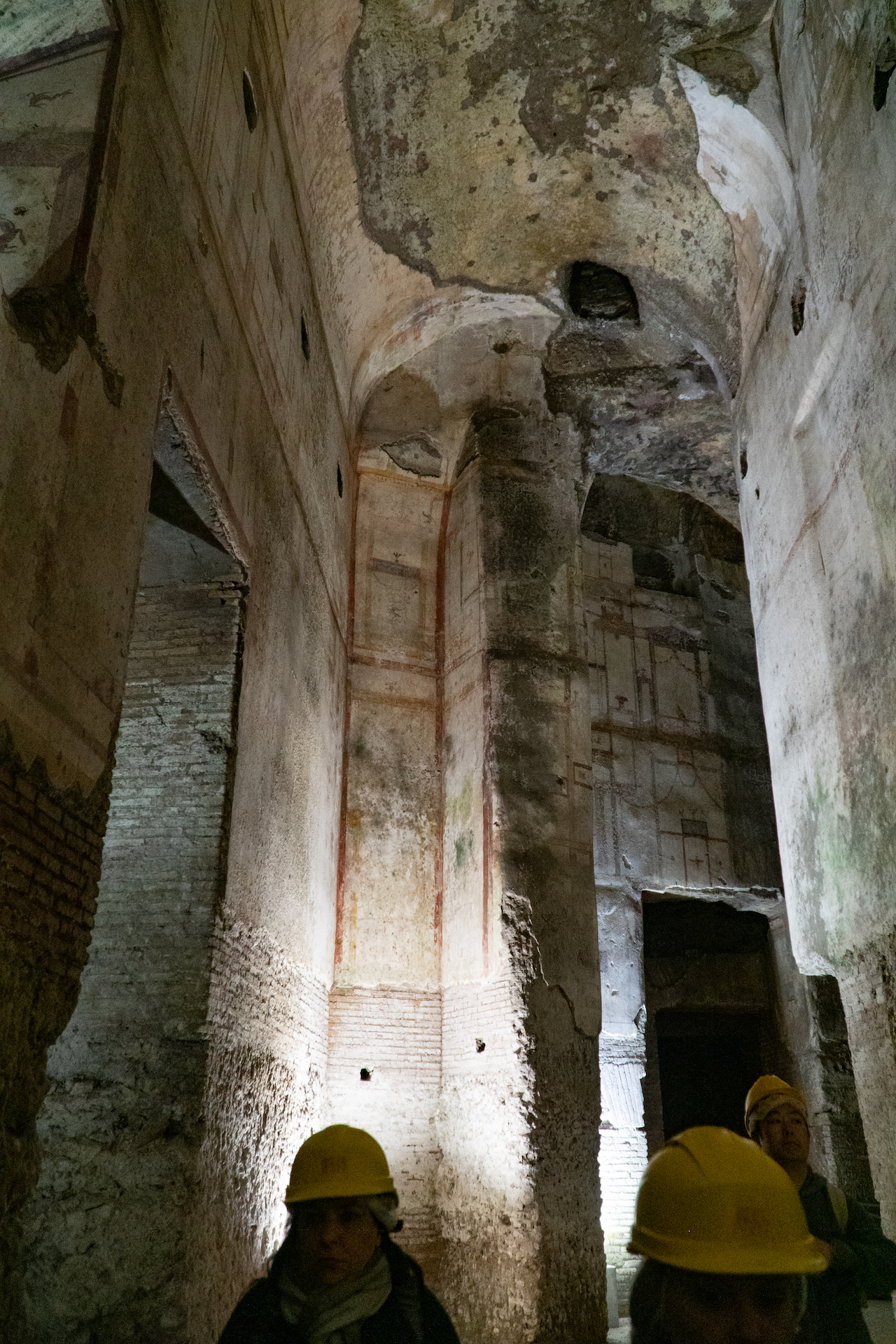
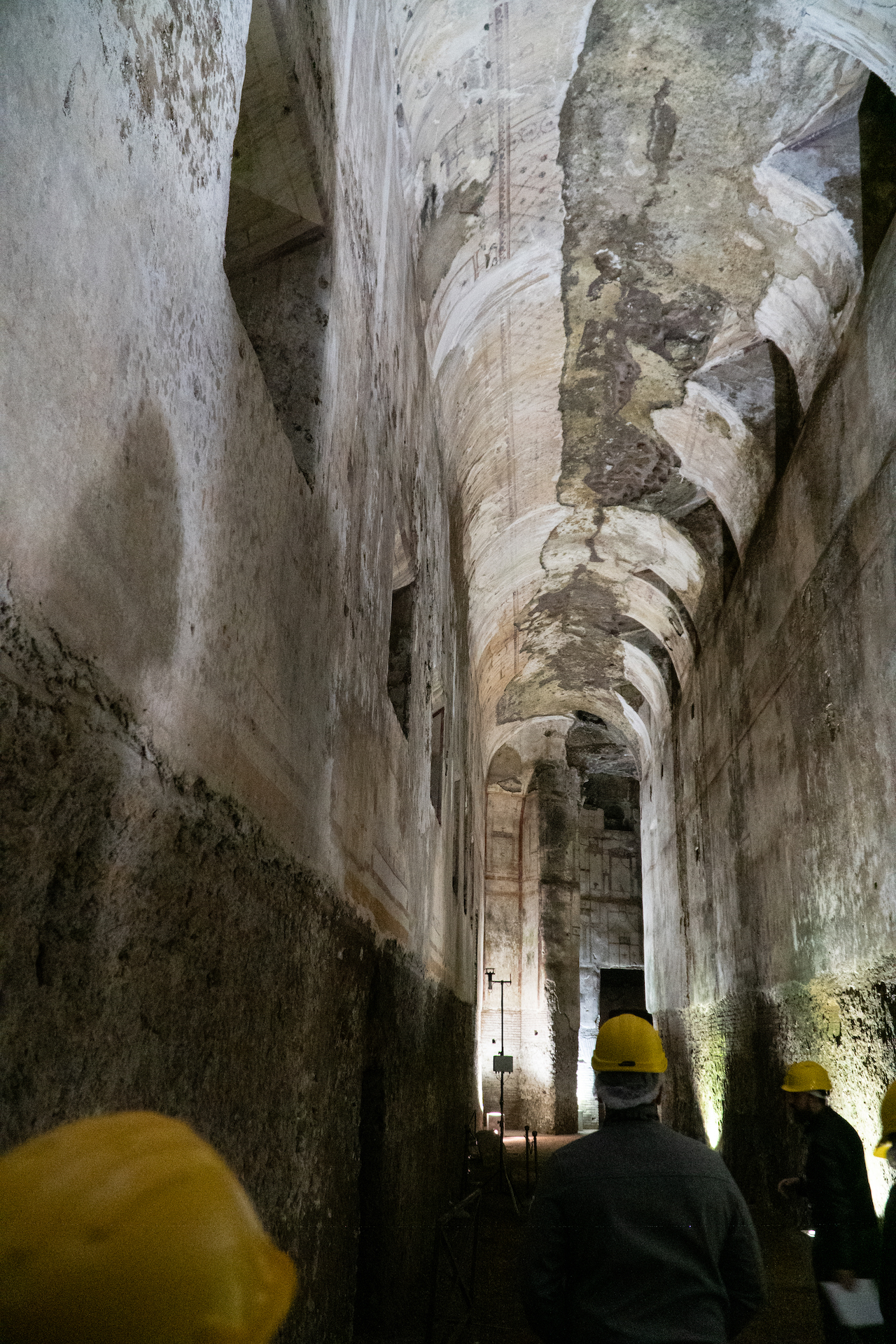
The height of these rooms is gob smacking – and to think this is all underground!
No expense was spared. Nero liked to entertain in the most extravagant ways. A mass of dining rooms and grottos for his guests to relax in and every room made the best use of natural light and vantage of the views of the manicured gardens outside. It is interesting that no bedrooms or cooking areas have yet been found – this palace seems to be built for pleasure alone, entertainment for the rich and famous. But there are dining spaces, so one must ask, where was the food prepared? Slaves most likely, but how far must they have walked to deliver the food? How did the food remain hot? Or cold?
The octagonal room is the most impressive and one of the most important structures in Roman architectural history. Octagonal in design, with doorways leading into the centre, with a round oculus above the centre , where the bath of sunlight would have funnelled in to light up the room. It is entirely made of concrete, a Roman invention that was seen in its day as an architectural marvel. The design was later copied to create the ceiling of the Pantheon.
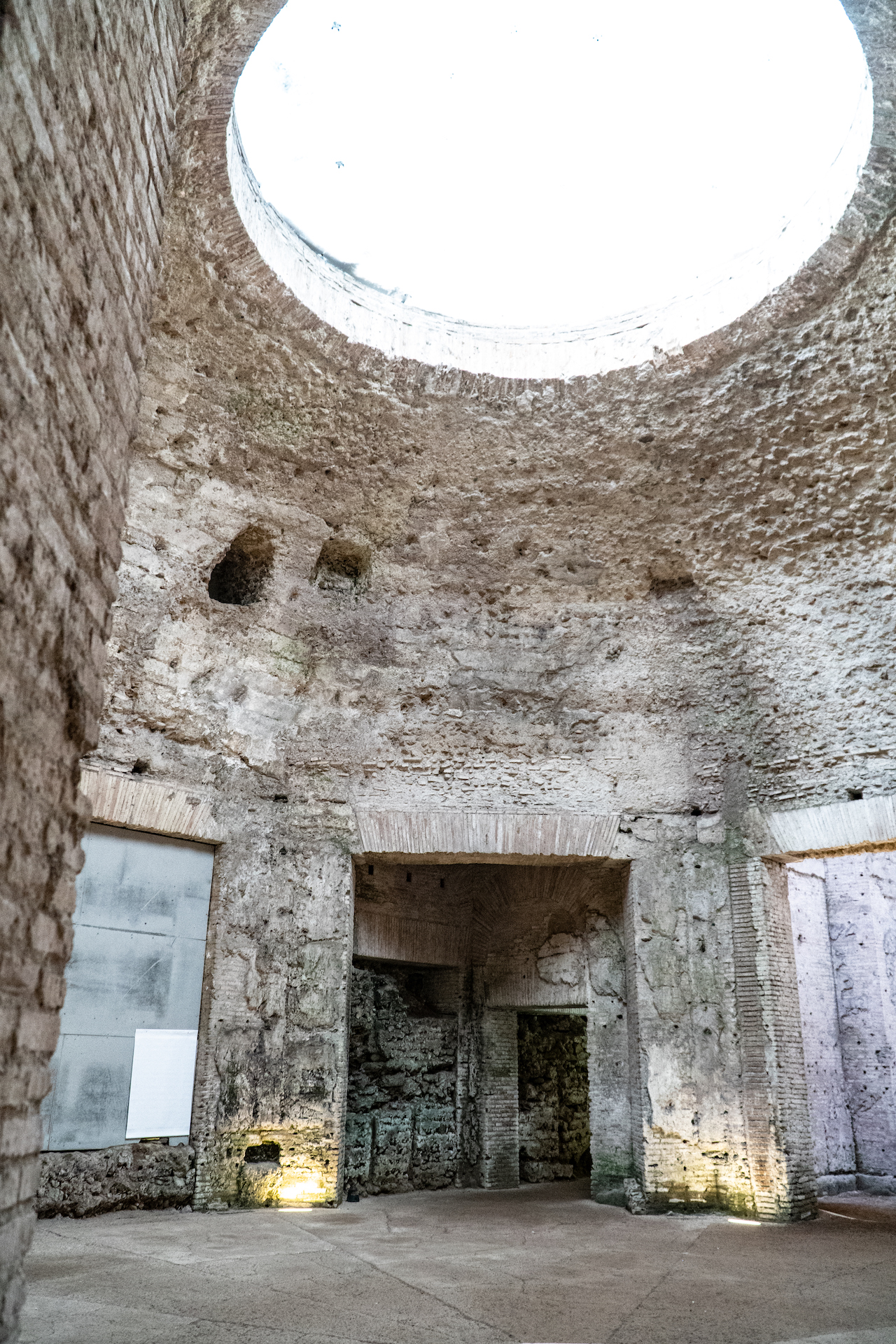
Those doorways would be open, like windows to the outside view. Imagine the light in here.
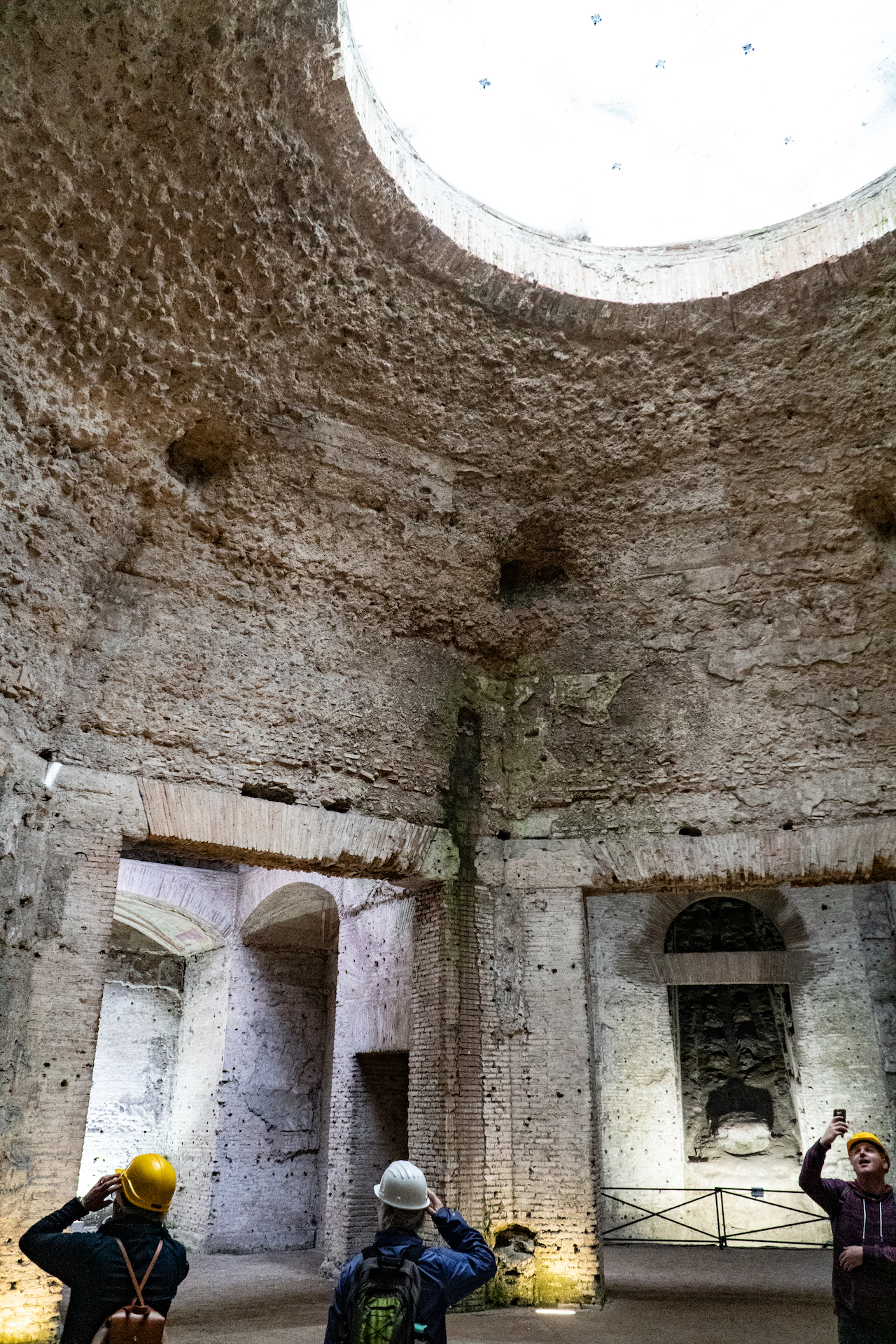
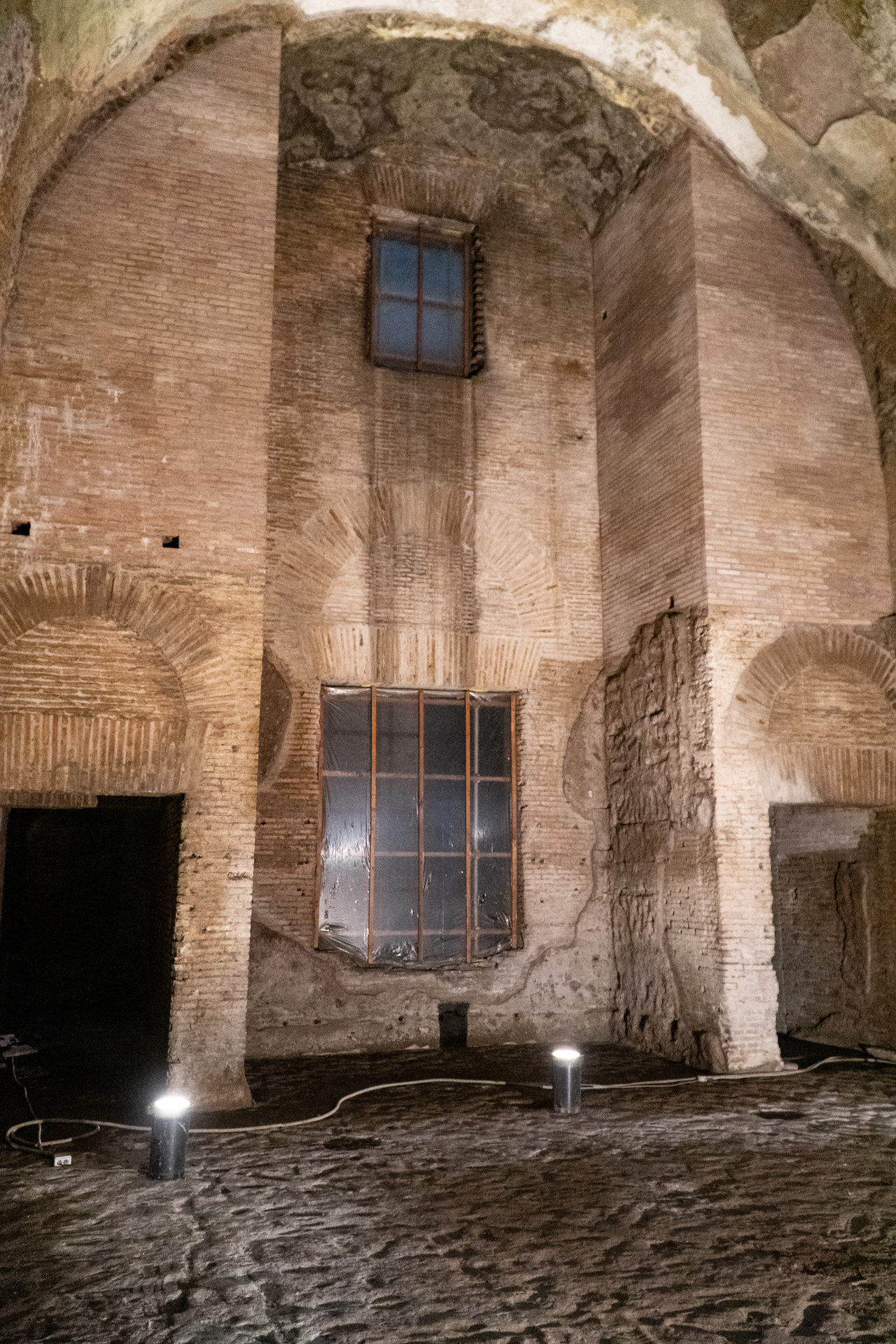
The room also features a waterfall wall, with drainage system below to ensure people’s feet didn’t get wet. The walls would have housed Nero’s many precious art works and collections he wanted to show-off to his guests. In fact, the whole place was a show-off. A statement really. A home fit for the Emperor, one he may never have actually slept in. This was all for show.
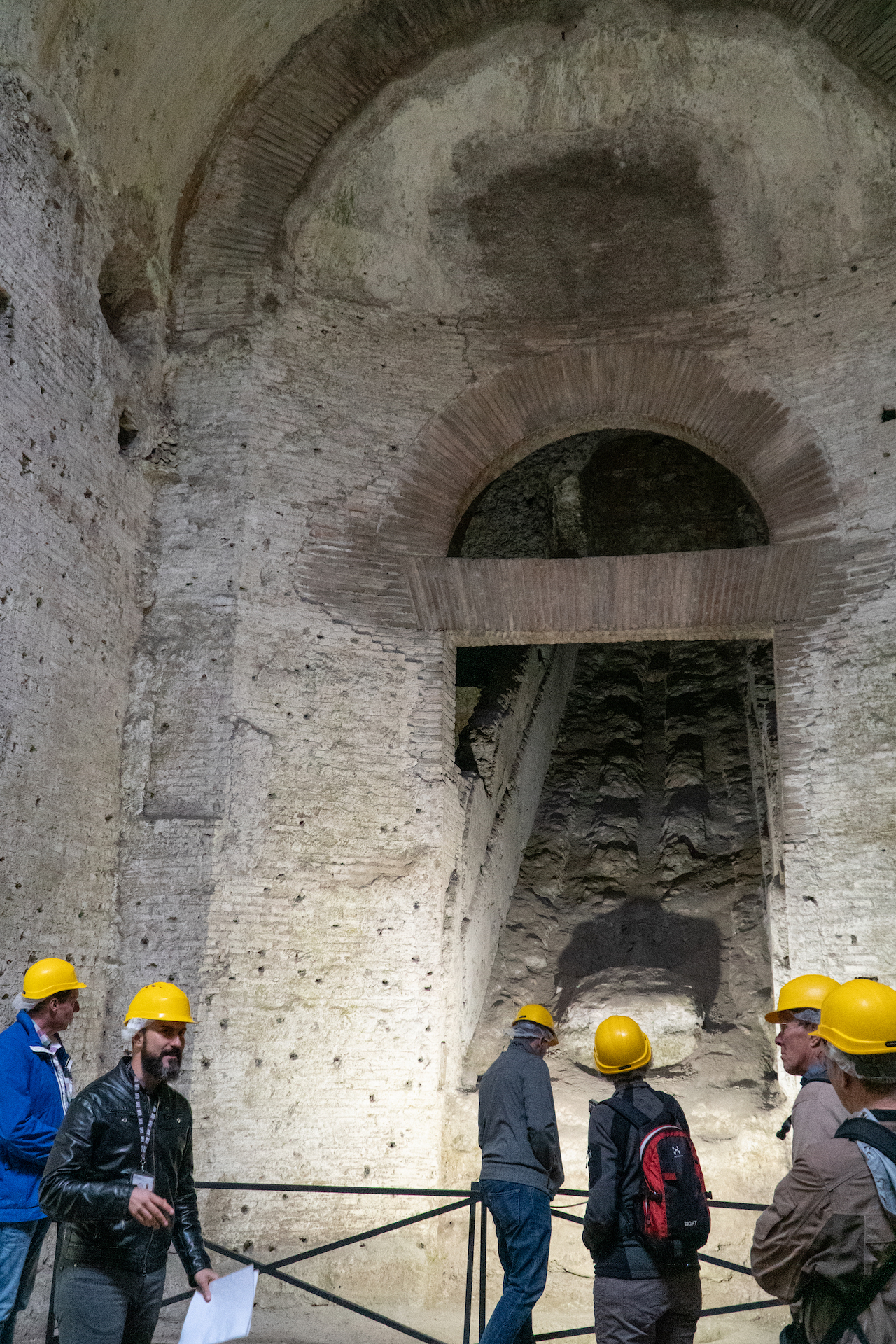
See the channels on the slanted wall to allow a waterfall to trickle down.
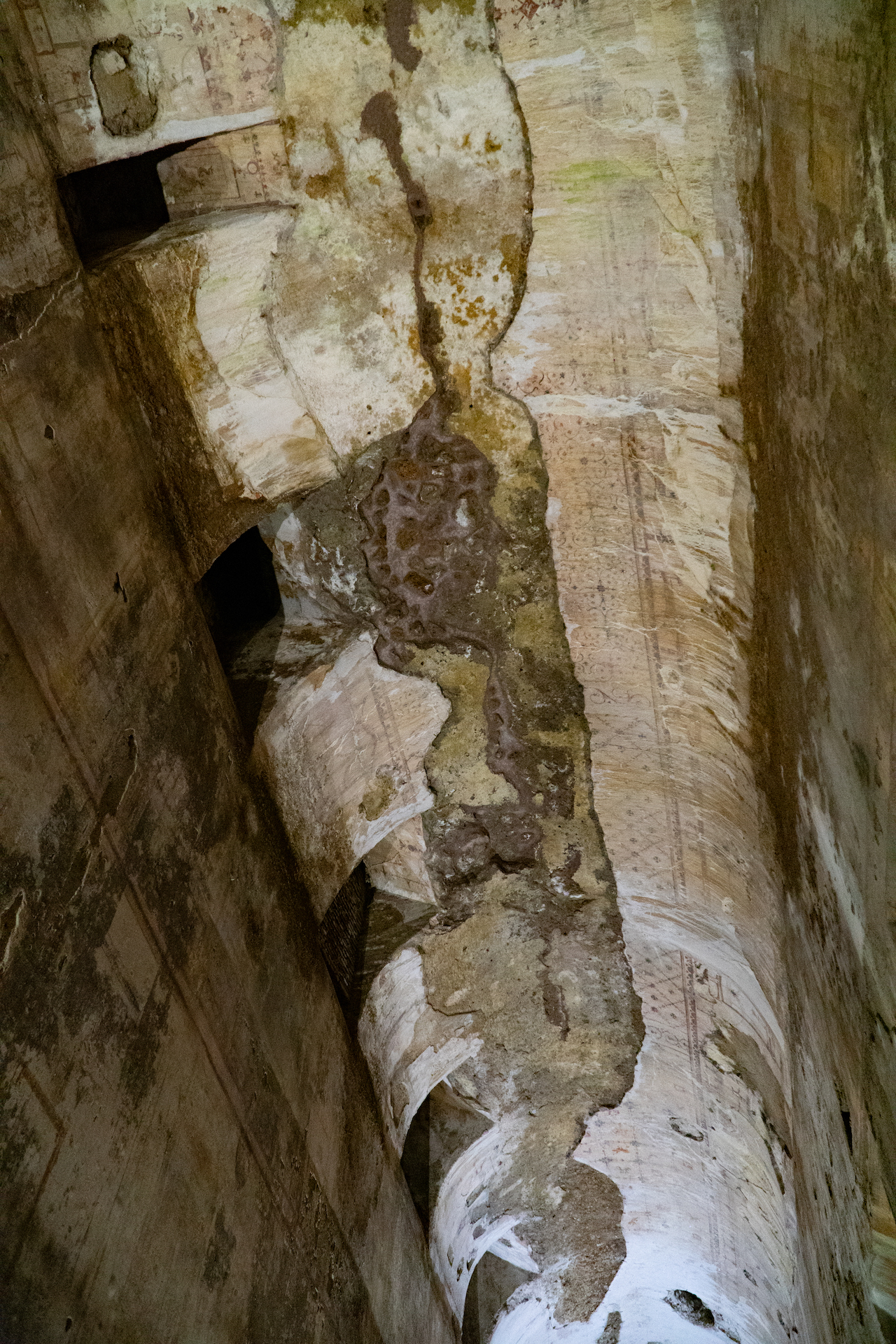
Incredible frescoes still intact on these vaulted ceilings after being buried for thousands of years!

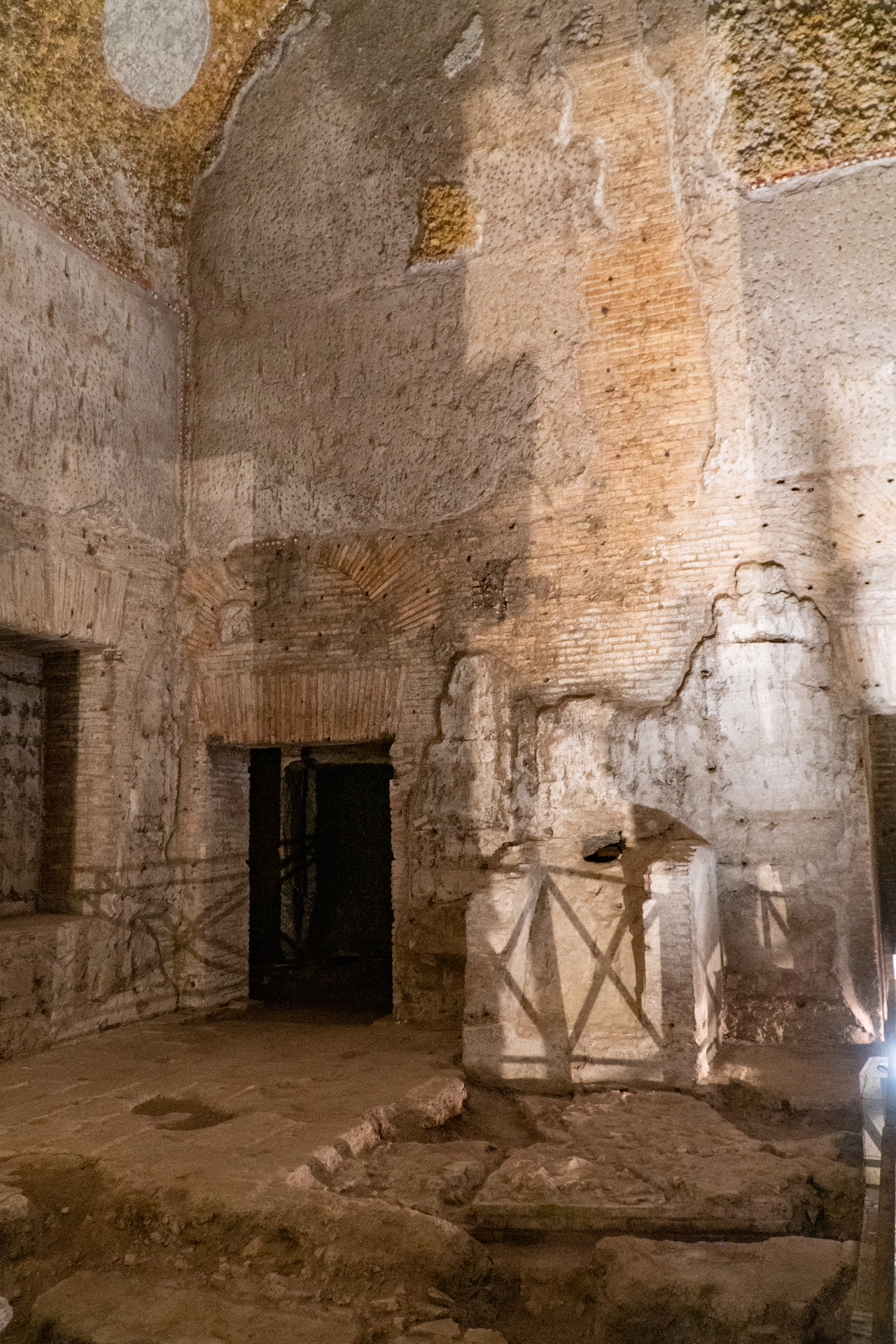
Get a feel of how high these ceilings are be how small that doorway seems.
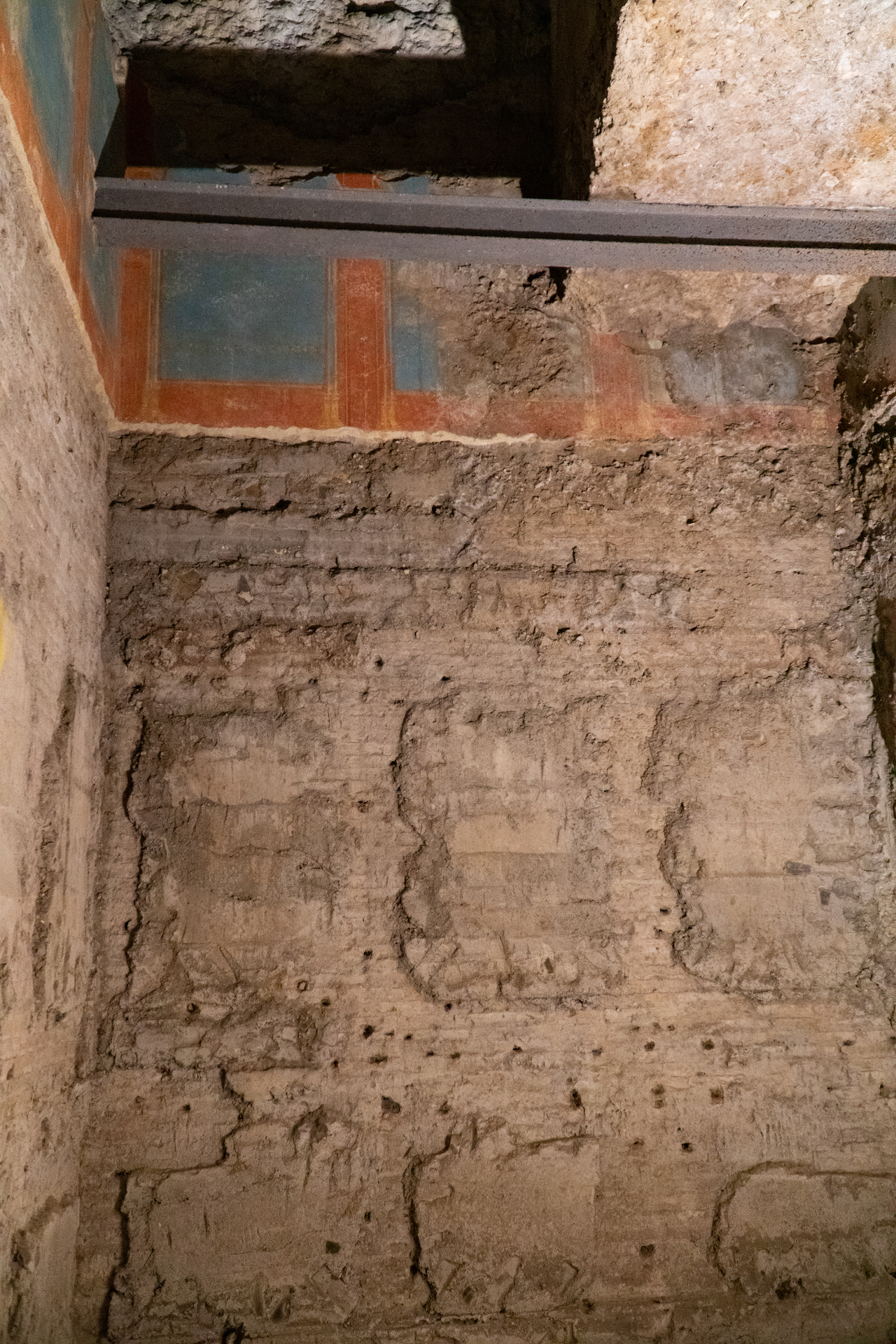
The whole building was adorned with artwork. This vivid blue, the most expensive colour of them all (coming from Egypt), speaks volumes of the opulence here.
Still, it’s difficult to imagine the real splendour of this palace. How beautiful did it really look? How extravagant? How opulent? How massive? Well, that’s the best part of this tour. You get to see it with your own eyes. Through virtual reality technology, you get the chance to see the palace in all its glory. You put on the virtual reality headset and suddenly you are in ancient Rome. The palace is no longer old stones and rubble, faded frescoes and mould. It is pure marble. It is an incredible way to fully understand just how special this place is. I got goosebumps. Just incredible. I can’t emphasise just how I felt sitting in a building so ancient, that had been hidden from the world for so long. The virtual reality experience really took this tour to another level, and great for those who aren’t as crazy about ruins as I am. There is no greater way to appreciate history than feeling like you’re right there amongst it, no need for imagination, you can see it with your own eyes as if you were right there, transported back through time. My kids would have loved it. I hope more historic sites take this technology onboard. It brings everything to life!
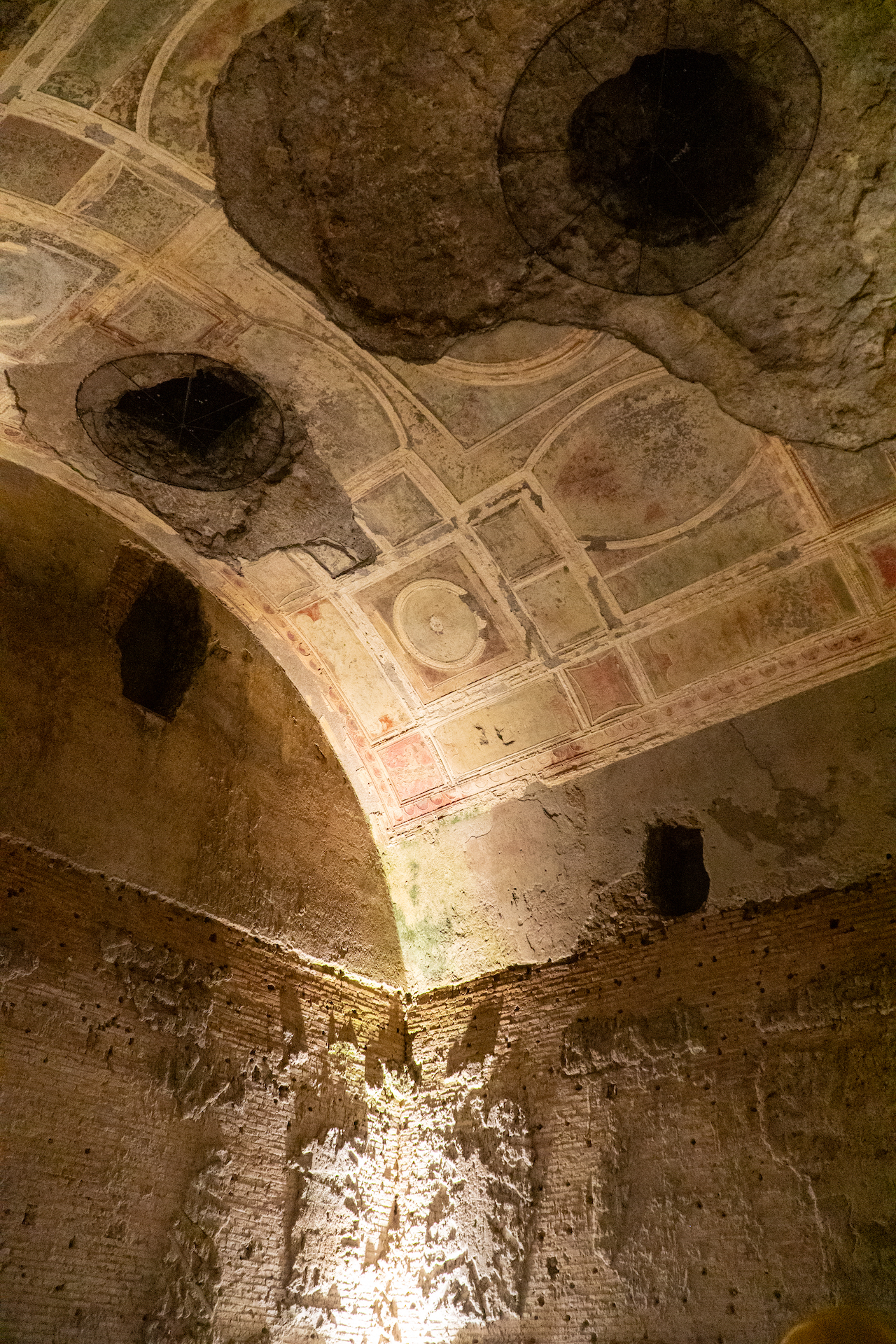
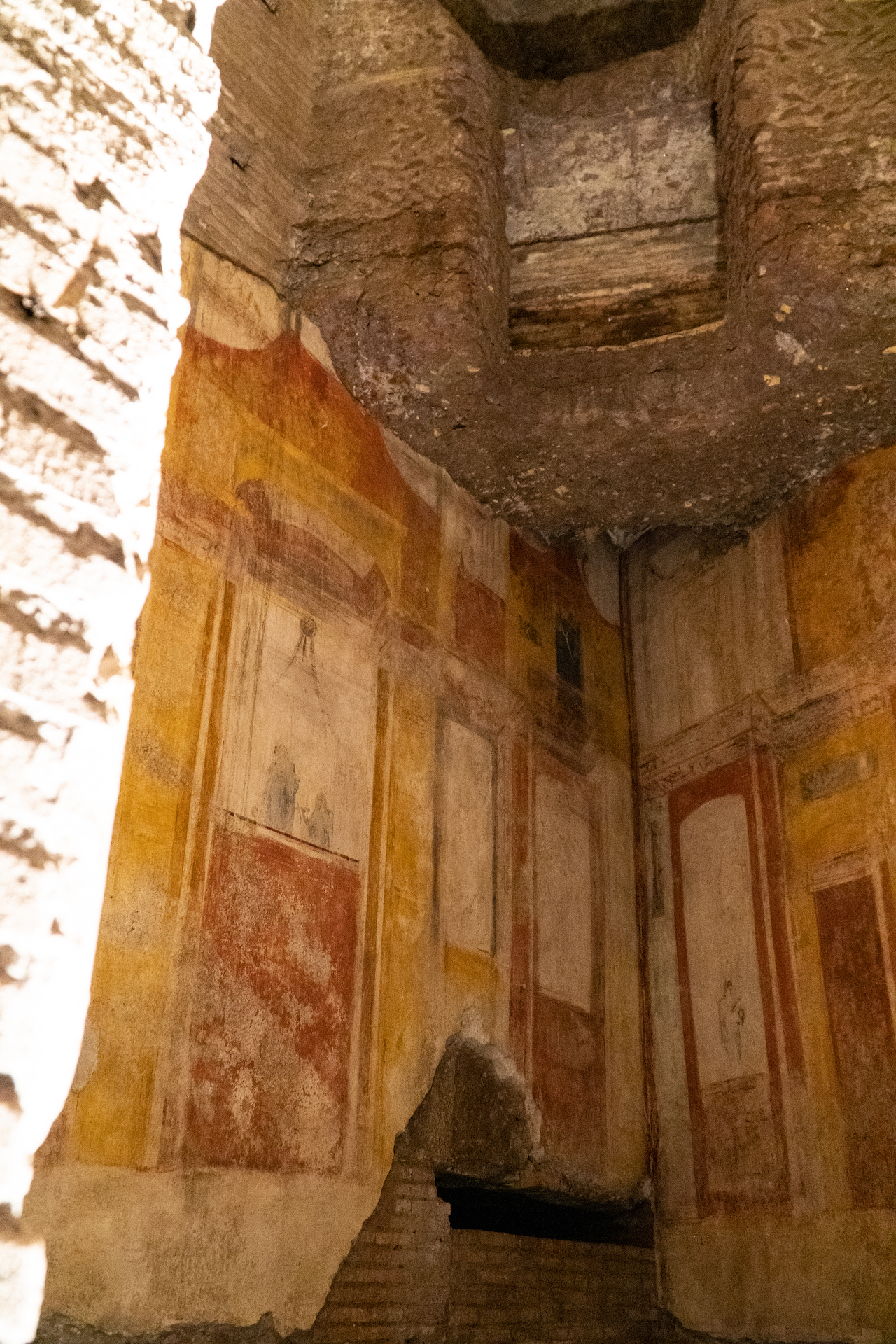
So why did this place get buried in the first place? After Nero’s death (suicide), the palace became a bit of a white elephant. He wasn’t a well-liked Emperor, in fact he killed his own mother, his wife, is thought to have been the cause of the fires in Rome that pretty much destroyed it in 64 AD, and sat there playing a fiddle while everything burnt to the ground (some say he caused the fire so he had the vacant land to build his palace on), and then blamed the Christians for the fire and had them put to death.
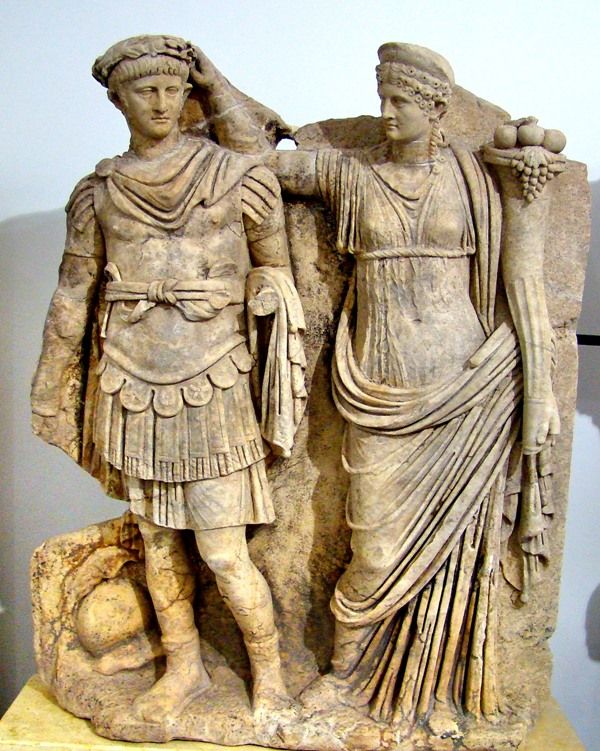
Nero being crowned at 17 years of age, after the death of his Uncle, Emperor Claudius, by his mother Agrippina (who apparently poisoned Claudius so her son would become Emperor). Five years later he had her murdered because she opposed the affair he was having with Poppaea, who he apparently also murdered later on.
His predecessors saw the palace as an embarrassment, an eye-sore, a reminder of the overindulgence of the Emperor they wanted to forget. It’s precious jewels and ivory were stripped and the palace was filled in with dirt and built over.
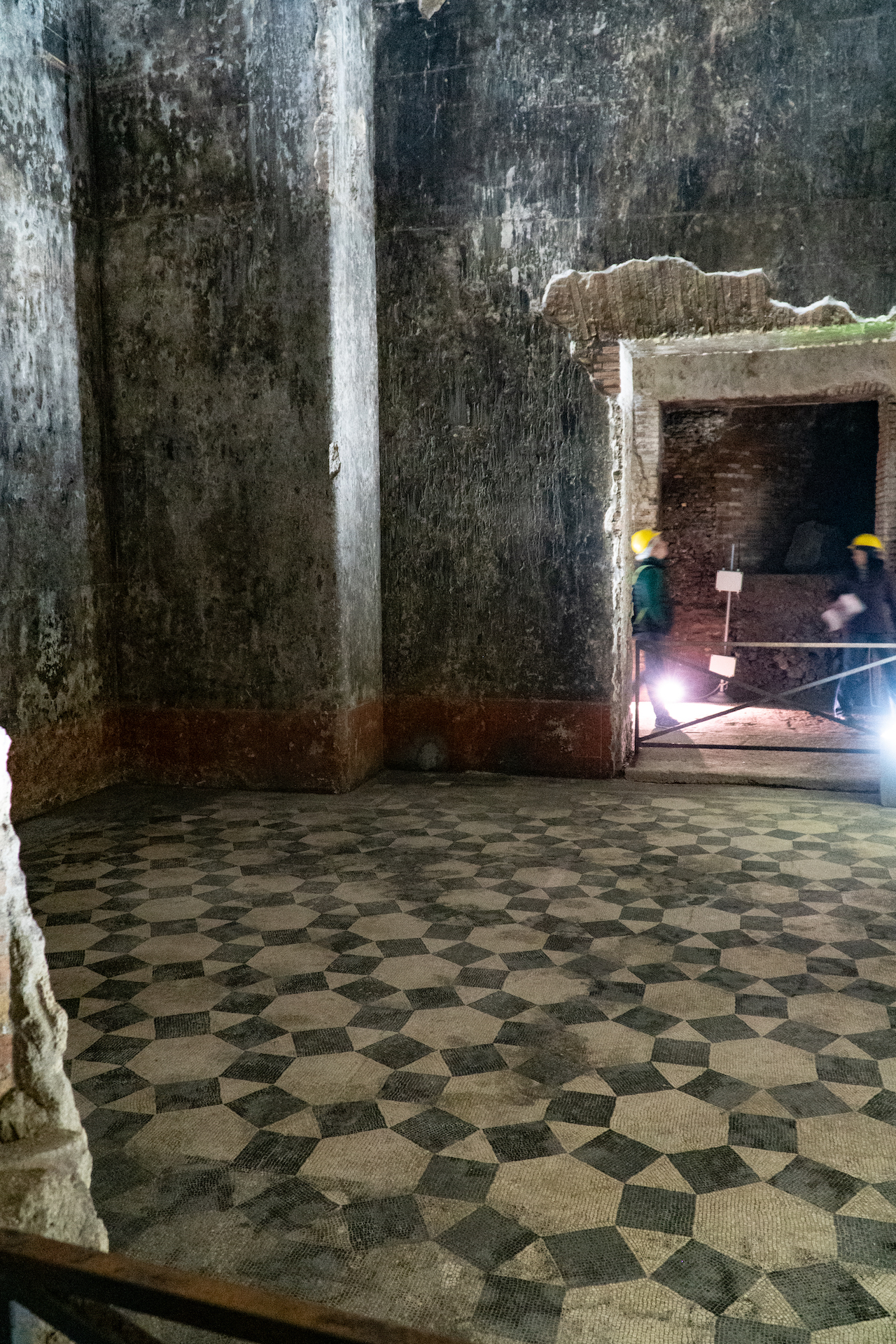
Incredible mosaic floors still intact.
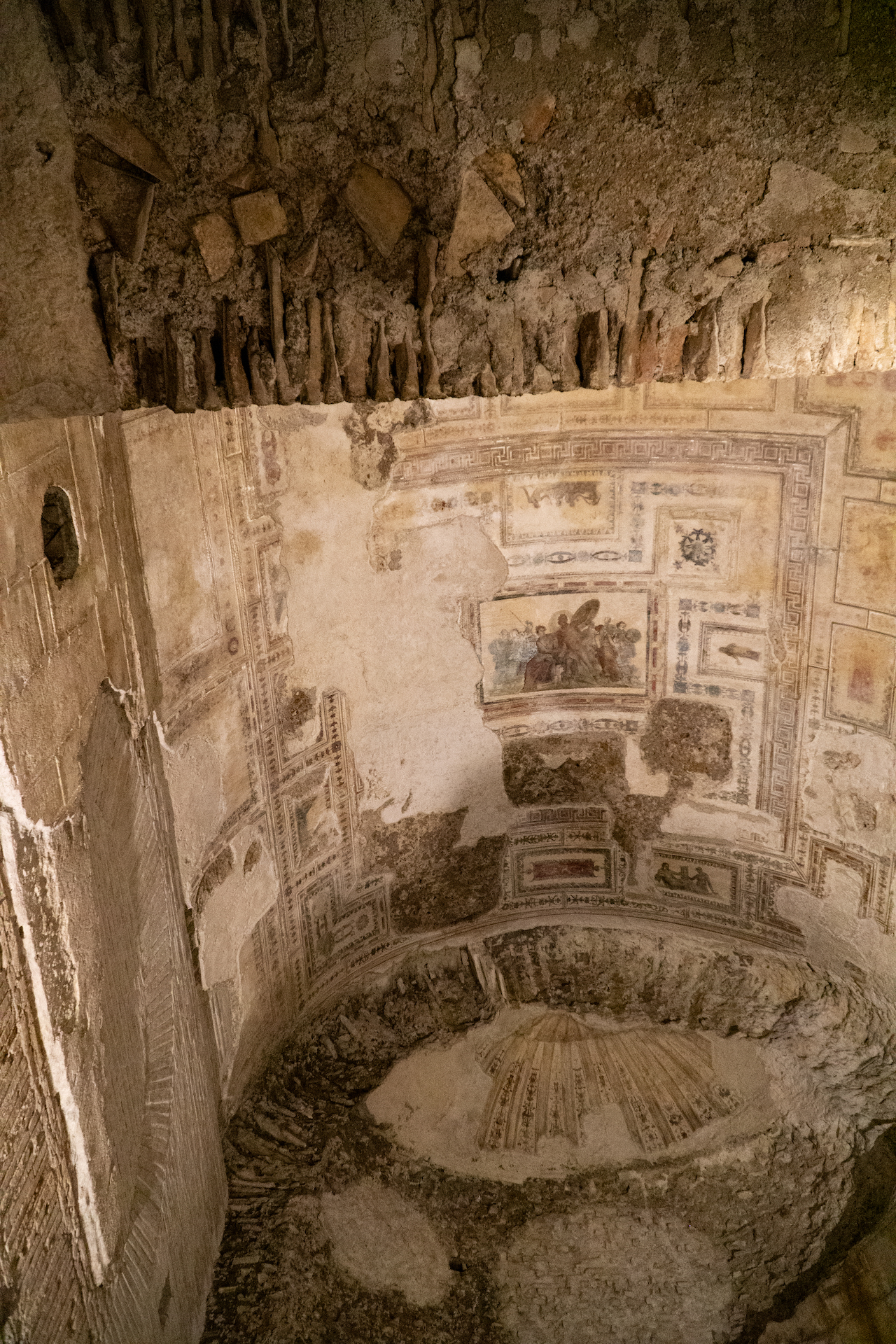
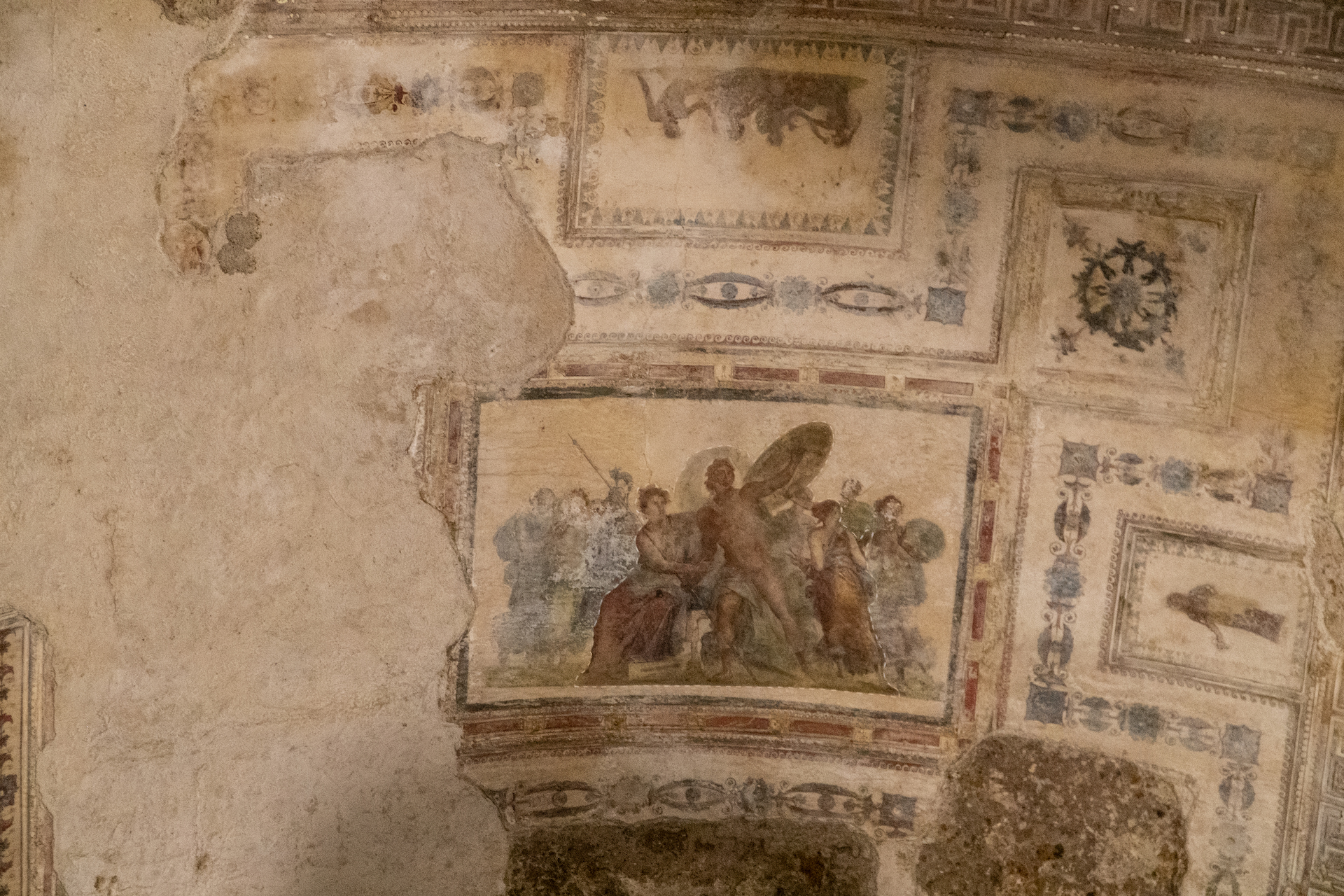
The Romans loved to bring mythical stories to life through art. This is Hercules, dressed as a woman, a scene from the stories of Ulysses and Troy.
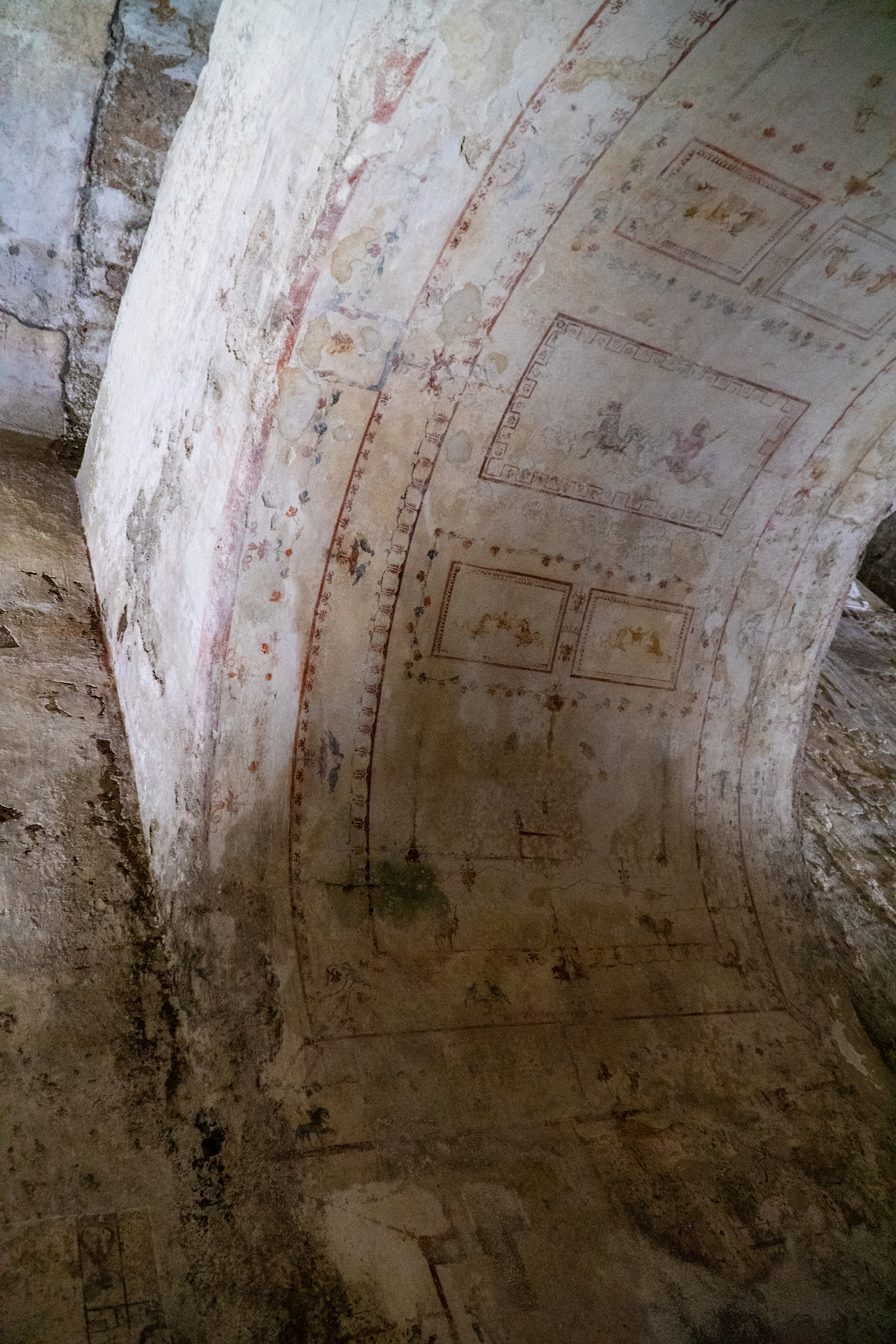
The Baths of Titus, Baths of Trajan, a Temple to Venus and Rome and the Colosseum was built on top of the site. Covered, forgotten about, sitting underneath Rome from around 70 – 100AD, preserved in the Earth it was buried in until it was accidentally discovered in the 15th century. Someone walking along fell into a hole at the site. He found himself in a cave, one of the grottos built by Nero for his guests, covered with beautiful artworks, frescoes of figures in a style no-one had ever seen before. Soon, other artists were climbing through the small opening into the grotto to look at the artwork, and copied the new style, today known as ‘grotesque,’ after the ‘grotto’ in which they were found. These artists graffitied their names on the walls, Michelangelo and Raphael to name a few, and the artwork became an inspiration for the renaissance artists at that time.
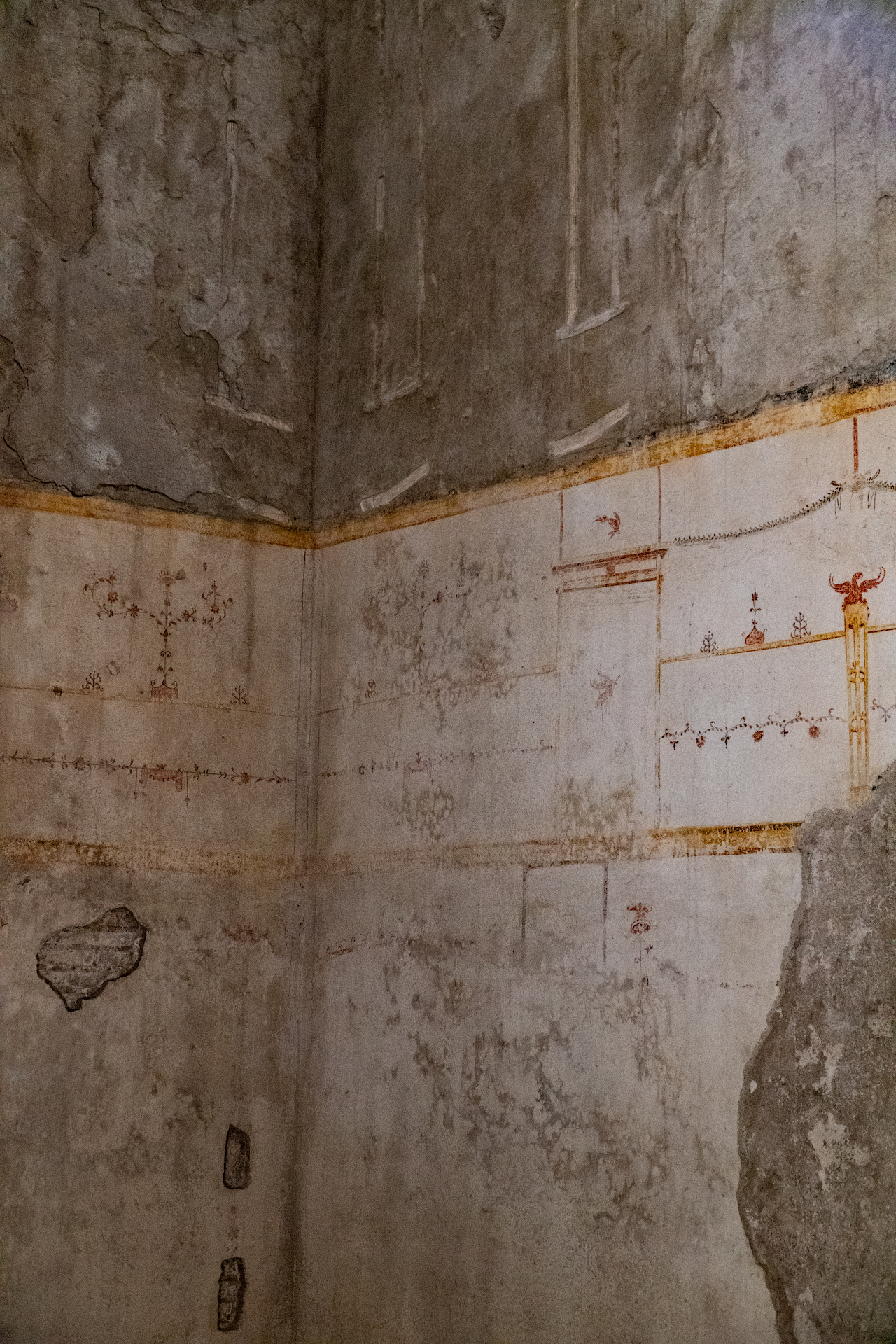
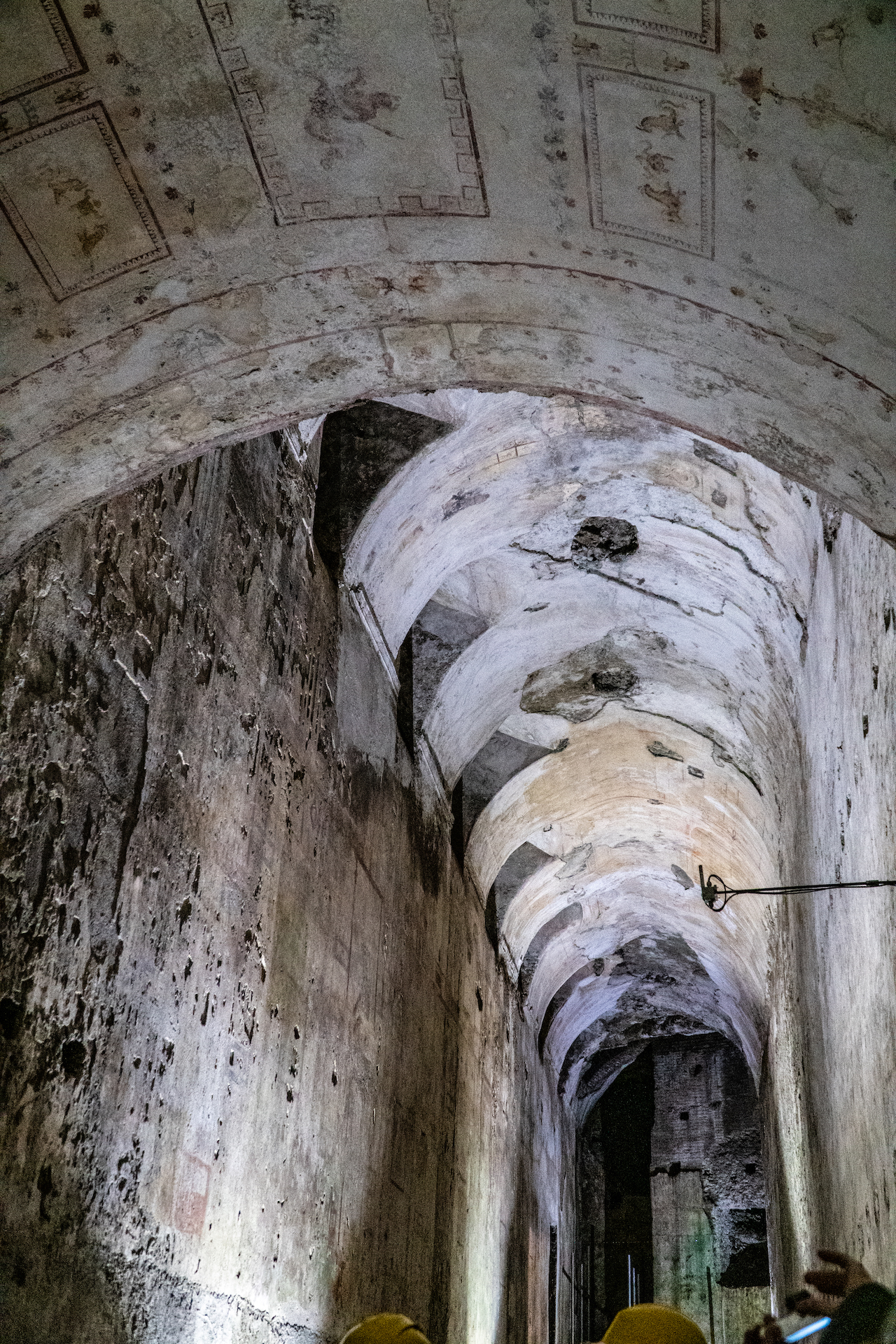
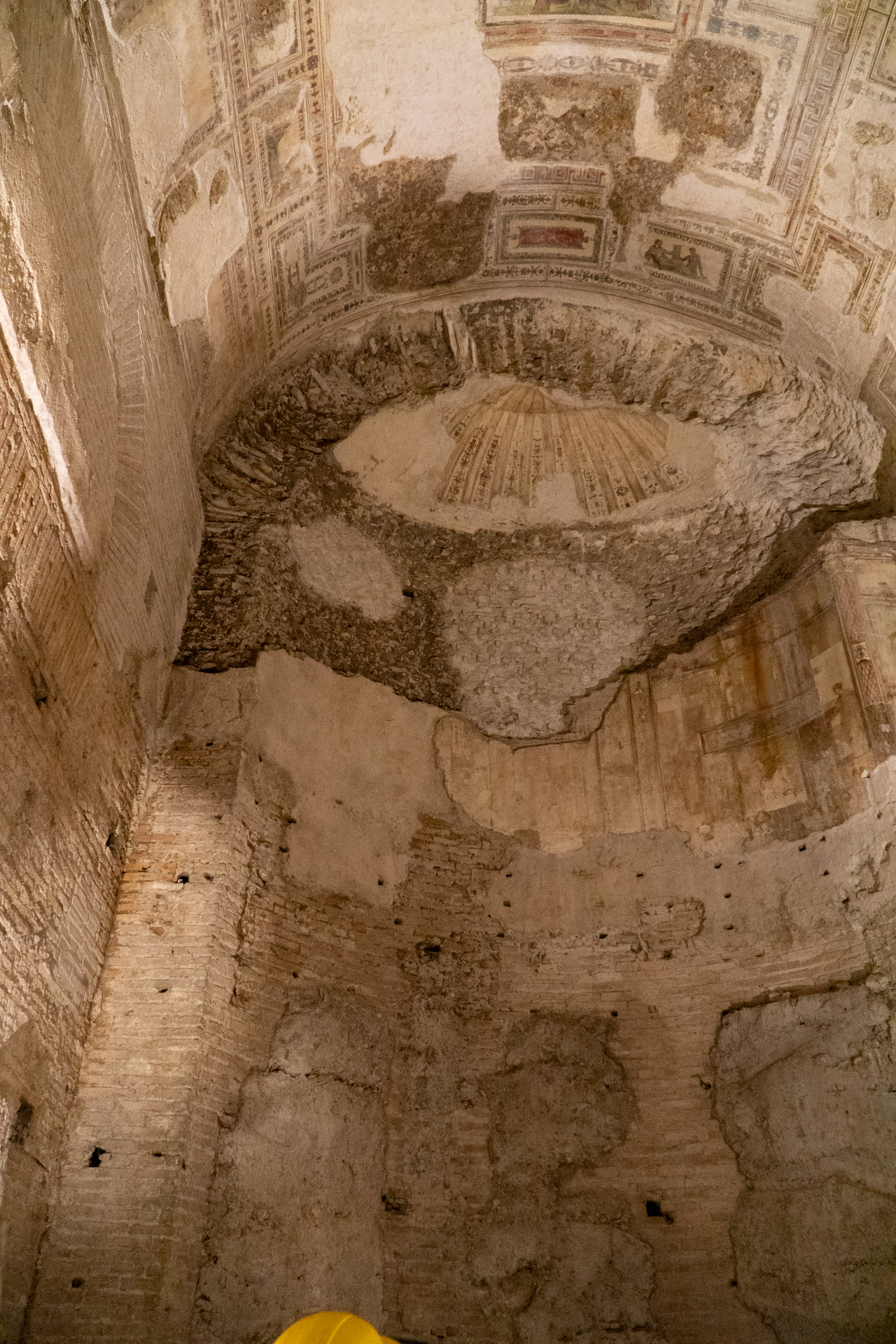
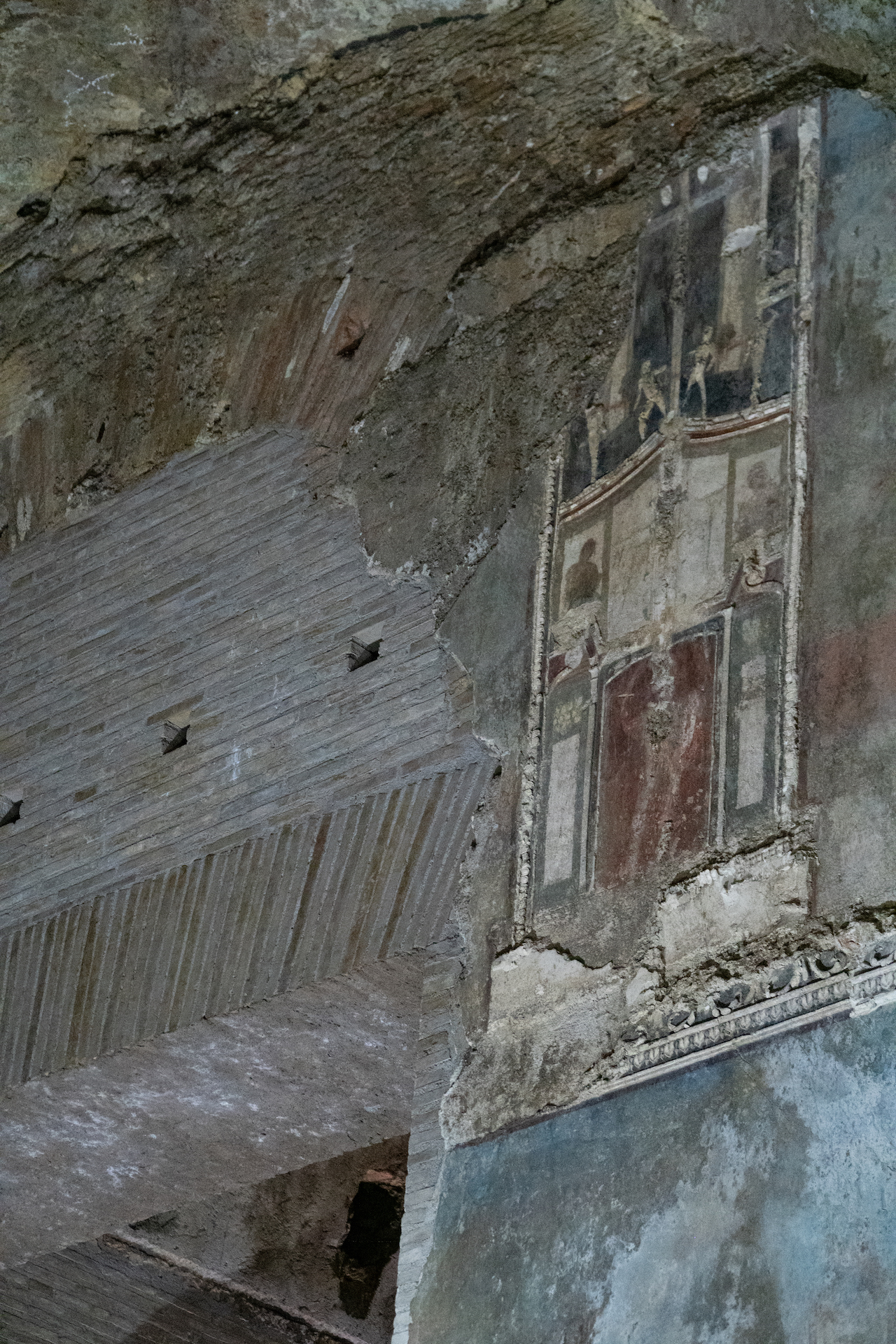
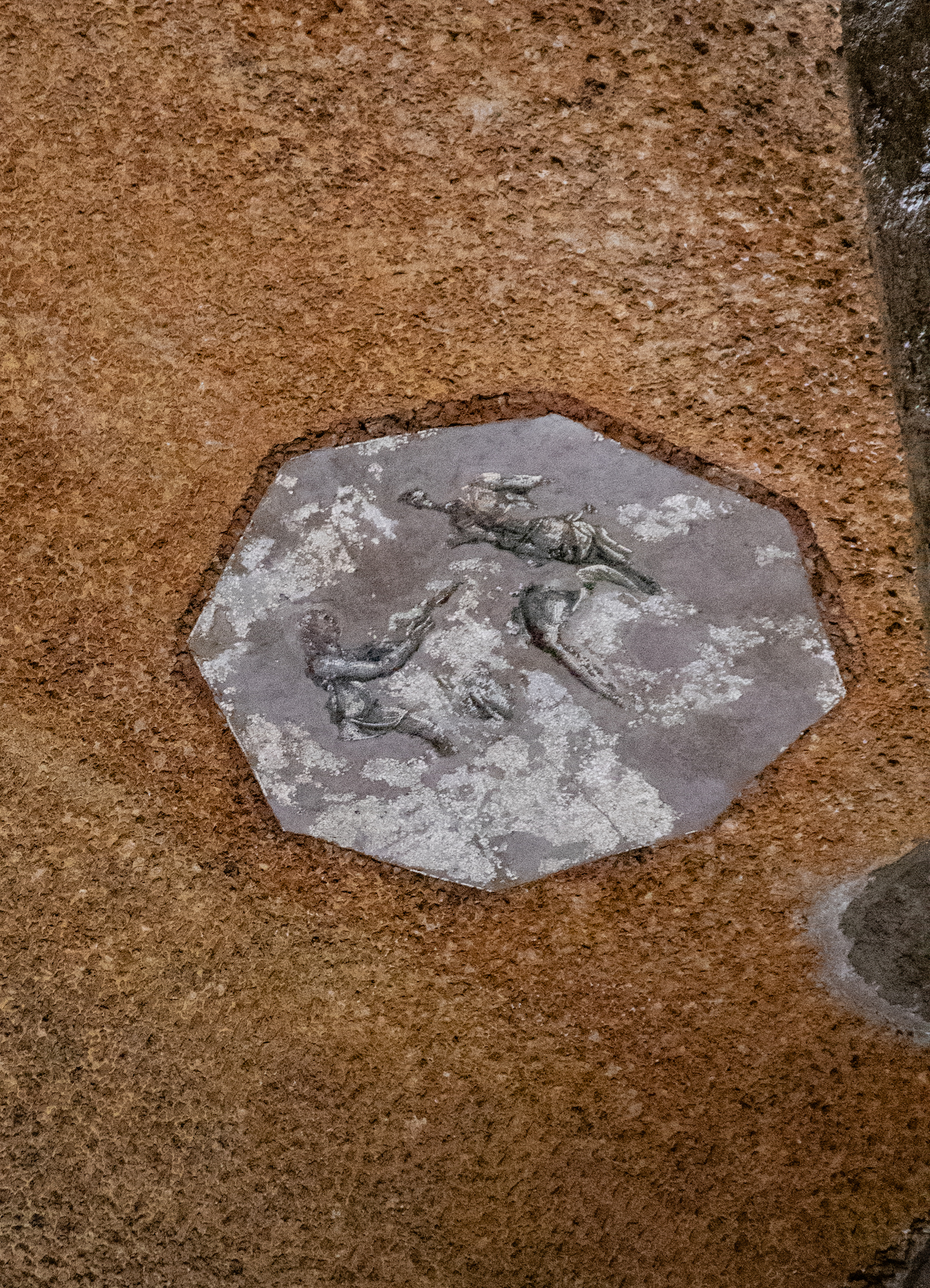
A mosaic showing Polyphemis (the cyclopes son of Poseidon) and Galatea (the nymph he fell in love with). A classic Greek myth, commonly included in Roman art.
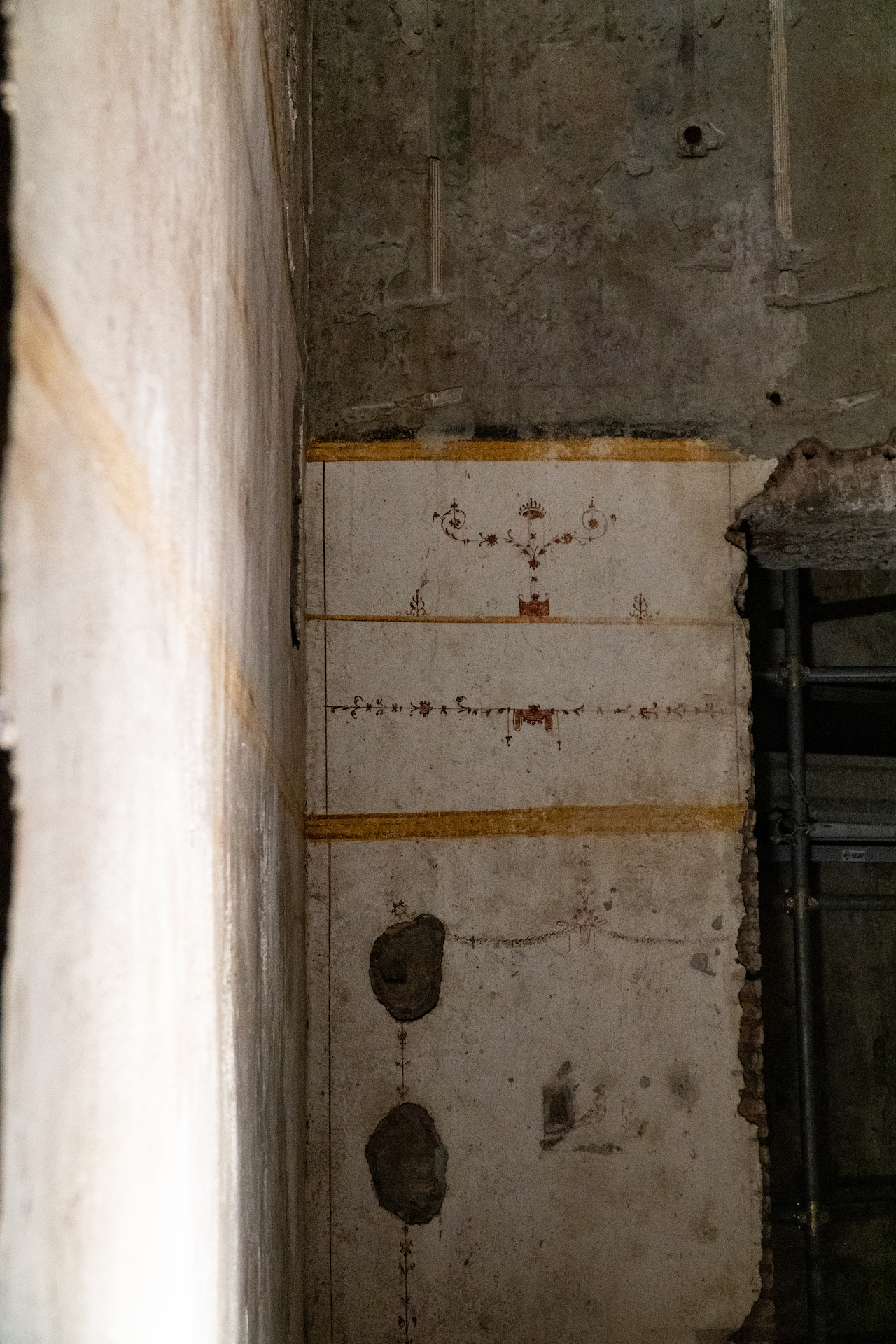
The Domus Aurea is a fascinating site to see while in Rome. Archaeologists are still chipping away (or digging away) at history and finding more and more of the ancient world. Just recently, May 2019, a new secret room was found, the room of the Sphinx, depicting frescoes of mythological creatures and musical instruments. Who knows what else will be uncovered in years to come. What treasures lie beneath us?


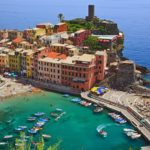
Fantastic historical and personal insight into your experience Liliana, you write extremely well. Thank you for sharing this with us, I hope you enjoy your time away.
Hi Sue. Thanks so much! I absolutely loved this trip, has given me a lot of inspiration and a huge desire to return!